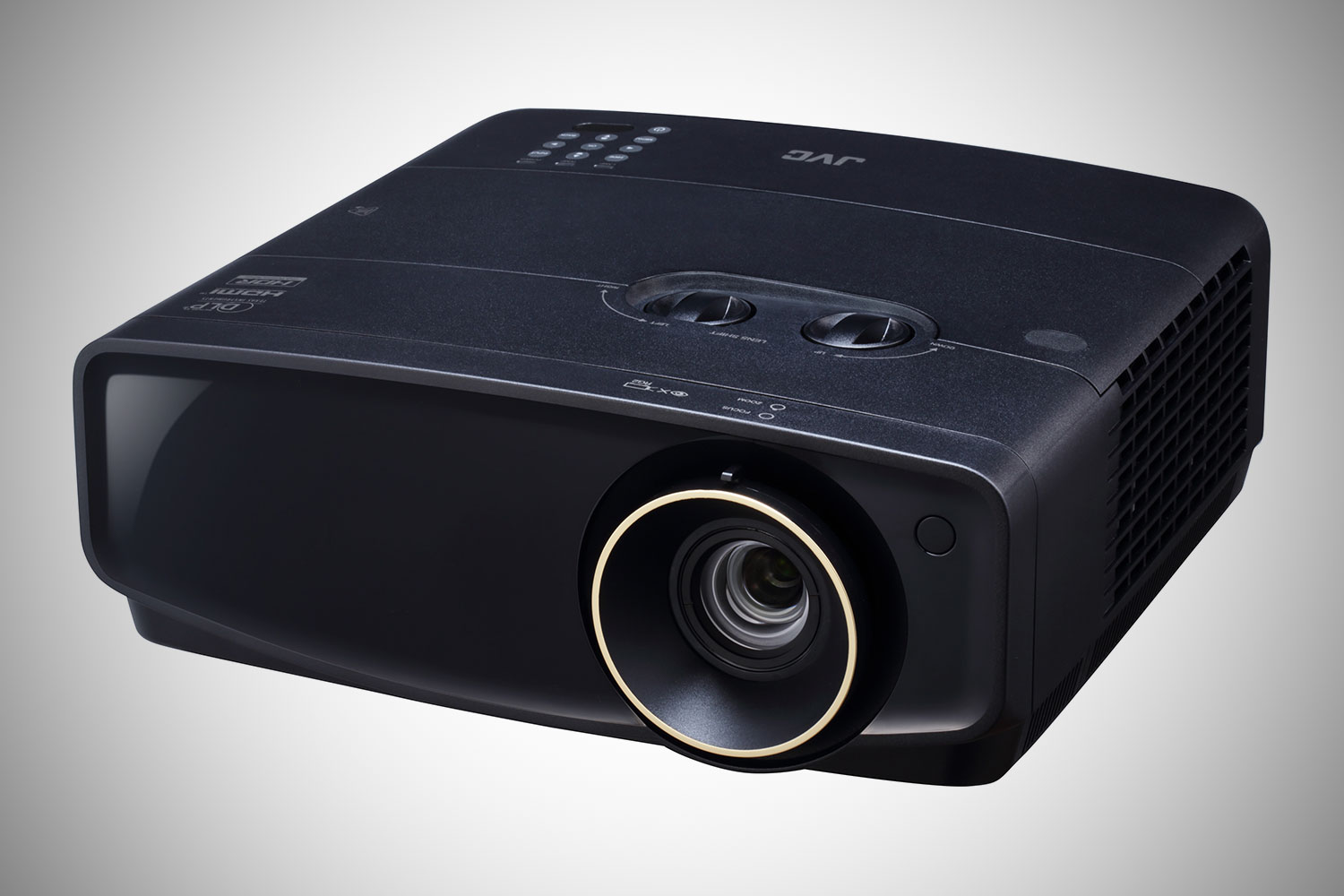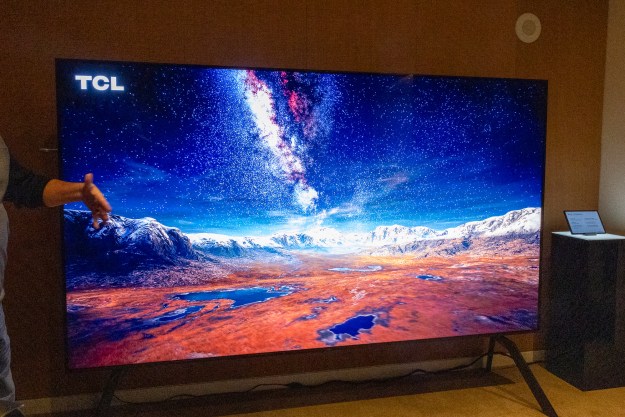
It wasn’t that long ago that a projector that offered 4K resolution, let alone high dynamic range (HDR), would be prohibitively expensive for most buyers. With solid lower-priced offerings like the BenQ CineHome HT2550 and Optoma’s UHD60, that is a thing of the past. JVC, known for its premium offerings, is the latest to announce a lower-priced projector that features 4K and HDR with its new LX-UH1, but will it offer enough in the way of features and picture quality to justify paying more?
The LX-UH1 uses a 0.47-inch TRP digital micromirror device paired and pumps out 2,000 lumens of brightness and a contrast ratio of 100,000:1. Combined with an RGBRGB color wheel and the high-quality optics JVC has been known for in the past, the projector delivers full 3840×2160 4K video. HDR is included as well, with support for both HDR10 and Hybrid Log Gamma, an up-and-coming format that is beginning to see more mainstream adoption among hardware manufacturers.
The projector features two HDMI inputs, with one featuring support for HDCP 2.2 and handling data transfer rates of up to 18 Gbps, making it perfect for 4K UHD Blu-ray players and streaming devices. For those who prefer a more automated experience, the LX-UH1 also features an RS-232C interface and a 12-volt screen trigger output that can automatically lower your screen when it’s movie time.
The features seem great, and JVC is certainly known for the quality of its projectors, but the pricing may cause some customers to look at other options. The LH-UH1 will retail for $2,500, which is $1,000 more than the $1,500 list price of the BenQ CineHome HT2550. The JVC does have an edge: It supports 100 percent of the Rec. 709 color space while the BenQ only supports 96 percent, and the more custom install-focused features will appeal to some. That said, the BenQ has its own edge when it comes to brightness as it pushes out 2,200 lumens compared to the LX-UH1’s 2,000.
We won’t have long to wait to find out if the JVC justifies this extra cost, as it will hit store shelves this May. If you’re not sure whether a projector is right for you, we have a guide to what to consider before buying one.
Editors' Recommendations
- What we want to see from the next Apple TV 4K
- Samsung’s new 98-inch DU9000 4K TV is just $4,000. Can it beat TCL and Hisense?
- Vizio’s first 86-inch 4K TV is coming soon, for $999
- Belkin drops a $50 mount for iPhone video calls on Apple TV 4K
- If you don’t see CBS in 4K on YouTube TV, try this


